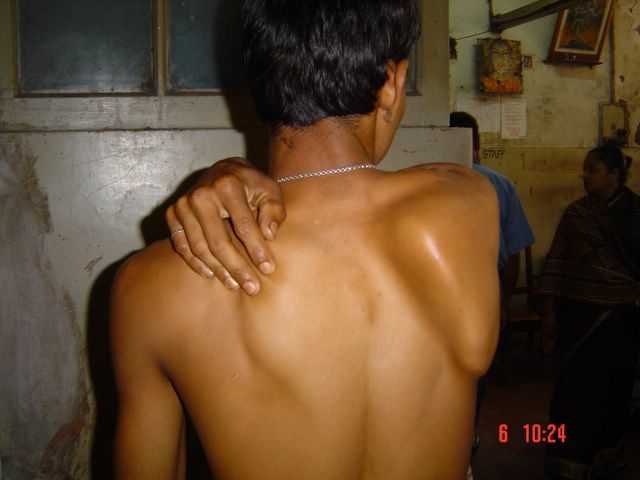
Photo from: http://en.wikipedia.org/wiki/File:Wingingofscapula.jpg
The long thoracic nerve innervates the serratus anterior muscle. To review:
Serratus anterior muscle |
|
| Origin | Lateral surfaces of upper 8-9 ribs and deep fascia overlying the related intercostal spaces |
| Insertion | Costal surface of medial border of scapula |
| Innervation | Long thoracic nerve |
| Artery | Lateral thoracic artery |
| Action | Protraction and rotation of the scapula; keeps medial border and inferior angle of scapula opposed to thoracic wall |
Usually, the long thoracic nerve is well-protected by the arm, which normally rests on the side of the body. However, it becomes exceptionally vulnerable when the arm is not protecting it because it lies directly over the serratus anterior muscle. Damage to this nerve is often caused by gun and knife injuries. A patient with a lesion in the long thoracic nerve will have a scapula that sticks out from the back because it is no longer attached to the thoracic wall. This clinical observation is known as a winged scapula, and occurs because the serratus anterior is unable to keep the medial border of the scapula opposed to the thoracic wall.

Photo from:
http://en.wikipedia.org/wiki/File:Wingingofscapula.jpg